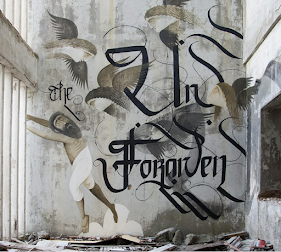Week 4- Early Christian and Byzantine
This week in History of Interiors, we learned about Early Christian and Byzantine. This era began in 29 C.E. with Pre-Constantine, going all the way to 527 C.E. with the Byzantine Rule.
Some of the earliest buildings that Christians worshipped in were church Houses. These were private houses that were then turned into synagogues. These houses were designed around a central courtyard and contained various rooms that served specific purposes; a gathering space for worship, education, communion, baptism, storage, and prayer. Baptism was a very important aspect of the church during this time, and the church houses often contained a bath or tub for this purpose. Additionally, frescos lined the walls to tell Biblical stories. During this time Christianity was prohibited, and Christians were persecuted, hence why worship took place in private houses compared to more public synagogues.
When Christians died, they were buried in catacombs. A catacomb is a passageway of chambers designed for a cemetery underground. Catacombs contained openings in their walls to bury the dead, along with rooms that held small chapels.
However, in 312 C.E. Christians no longer had to hide their beliefs, as Constantine became Emperor of Rome, he made Christianity the main religion. Persecution of Christians rapidly stopped, and Christianity was legalized. This meant the Christians could openly express their religion, and the church was more than happy to tell them what to eat, how to act and when to pray.
Christians ate many of the same things as any Roman citizen, but they tended to eat more fish, and this resulted in mosaics containing loaves and fish because of the miracles displayed in the Bible.
While Constantine believed that Christianity could and should thrive within Rome, he also did not want to compromise Roman ideals such as religion, traditions, and monuments. So, when the Old Saint Peters church was built, all of this was taken into consideration. The church housed relics but did not hold any statues or sculptures that could cause idolatry. Within the churches there were mosaics. Mosaics were pictures put onto walls that encompassed stories of the Bible and worked as a way of informing new believers.
Eventually, Constantine died, the Roman Empire fell, and the Byzantine Empire took over.
Out of this era came an extravagant church, called the Hagia Sophia, which was a combination of mysteriousness and being classically rational. While the building's exterior had plain surfaces, the interior was highly decorated, with lavish ornamentation, and was a surprising well-lit building. A key material that was used during this period was ivory, which could be inlayed on panels on furniture. The Byzantine era also used mosaics to tell the stories of the Bible.
One Step Further
Fikos is a graffiti street artist who creates contemporary Byzantine Paintings. While graffiti is usually a form of art used to vandalize and visualize anger with defiance, that is not how Fikos views it. Fikos uses graffiti as a modern application of mosaics, creating pictures and messages similar to that of the Byzantine era. He creates stories on walls As the article states, “If so even graffiti, or at least some of its more positive strains as found in recent Neo-muralism, can be seen as an attempt to imaginatively transform our bleak post-industrial environments ̶ to offer an alternative vision ̶ by infusing them with images suggestive of a far richer, living and higher reality, imbued with beauty, lyricism, joy, rhythm and hope.”









I love your modern day examples! they are super cool! Especially that baptismal! it is beautiful!
ReplyDeleteSammy- Excellent summary! I love the information you provided us about Ficos and the art he created that was inspired by the Byzantine Era. 50/50
ReplyDelete